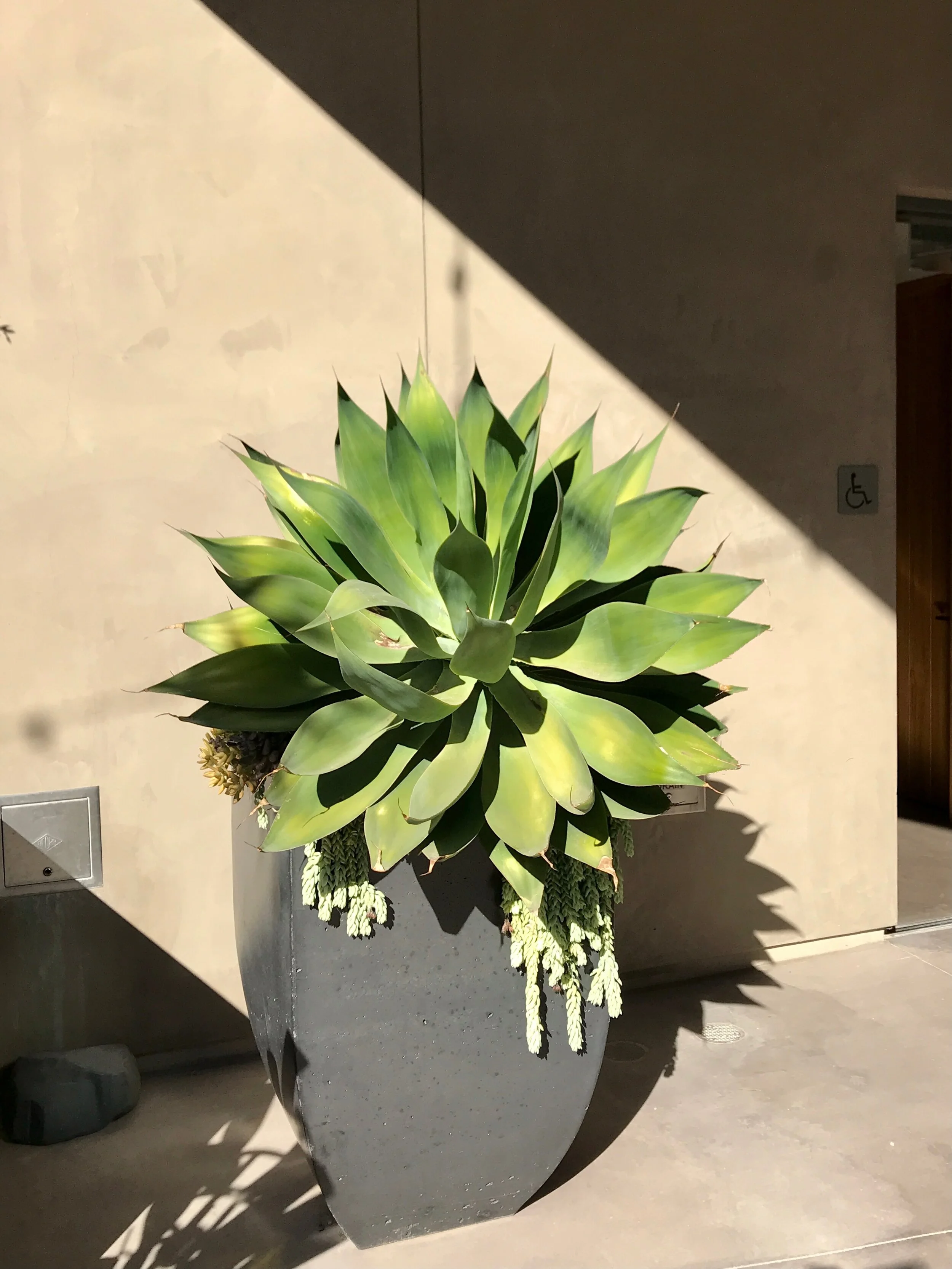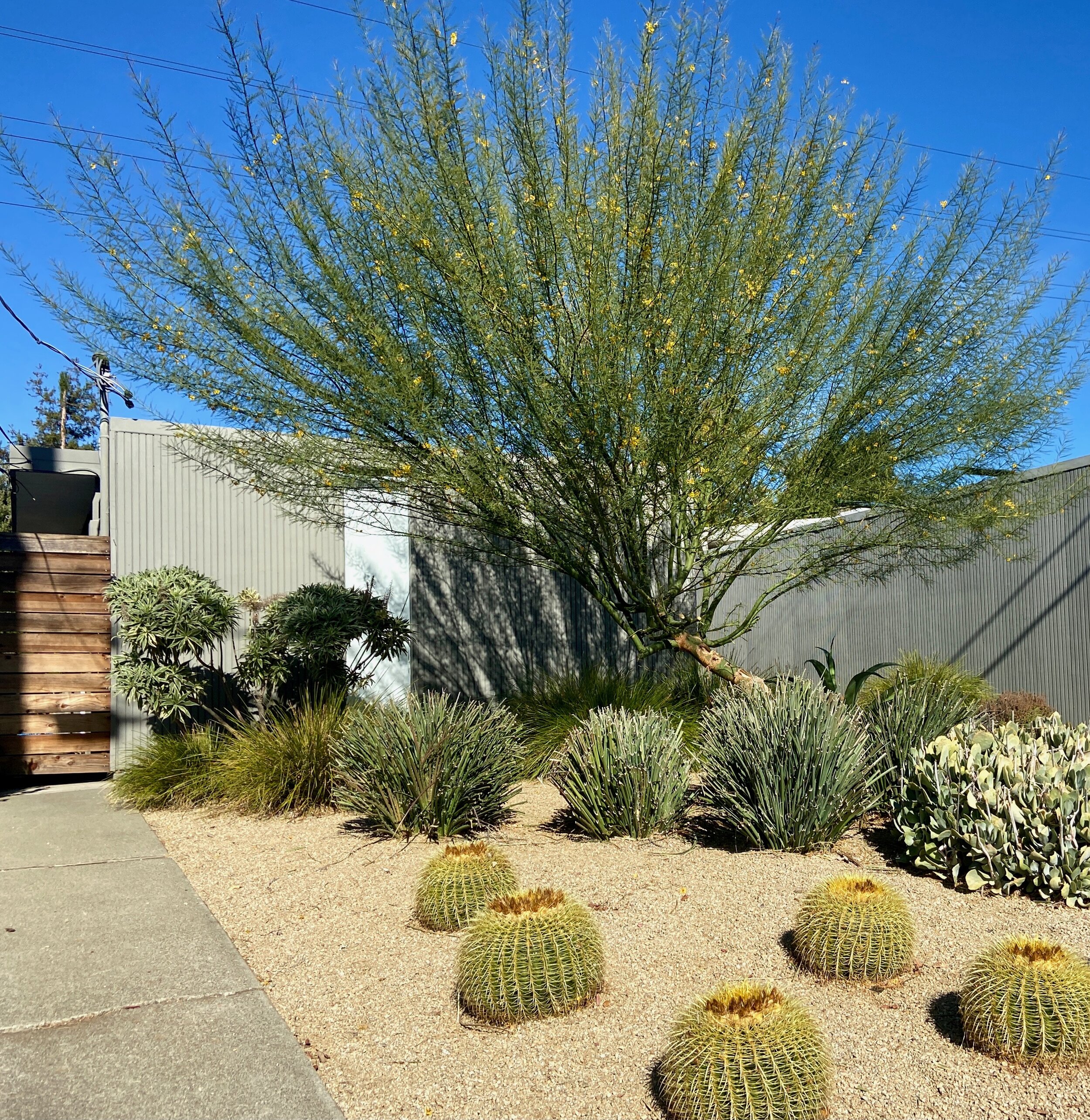Mo' Water, Mo' Problems: the Benefits of Xeriscaping
Whether you live in a dry environment that doesn't receive much rainfall or simply want to reduce your irrigation costs and efforts, xeriscaping may be just the thing you need. Before discussing xeriscape design ideas, though, let's clear up what xeriscaping actually is:
What's Xeriscaping?
Xeriscaping was first designed as a gardening and agricultural solution for drought-afflicted areas. It refers to gardening practices that conserve water through landscaping choices, and has now become popular outside of its original purpose.
‘Xeriscaping' feels like an unusual word, thanks to its strange spelling, though 'xeriscape' is taken from the Greek word 'xeros', meaning 'dry', and 'scape', meaning view or scene. So, xeriscape in its literal form means a dry scene. Xeriscaping design ideas, then, are landscaping techniques that aim to create a space that doesn't rely on high volumes of water.
Its Benefits (to the Environment and Your Wallet)
One of the obvious benefits of xeriscaping is the conservation of water, which, in turn, saves on utility bills. Reducing irrigation demands when envisioning a landscape achieves two goals: helping the environment, and reducing costs. Looking for ways of reducing water consumption is an environmentally friendly endeavor. Not only this, but water rates are calculated according to usage, so the less you use, the less you pay.
Its Impact on Aesthetics
Another benefit of xeriscaping is in its design ideas — they usually involve an end result that requires less maintenance. When creating a landscape, sometimes you have to complicate the design or make it more difficult to maintain when you have to incorporate a complex irrigation system. Xeriscape design ideas, on the other hand, eradicate this aspect of the design.
At the design level, this means that the overall vision has more freedom as it does not have to rely so heavily on the placement of an irrigation system. At the execution level, the project can be completed in less time and with fewer potential complications.
Regardless of whether xeriscape design ideas are being implemented on a residential or commercial, a simpler project with a shorter timeline will always be welcomed by the property owner as it saves them time, money, and potential stress.
Setting the State for a Xeriscape Garden
Some key tips for planning a xeriscape garden include knowing the topography of your property. Get to know the terrain and microclimates on your property, looking at where water flows and collects, which areas are in sun or shade, and how wind affects your landscape. Working with these influences will ensure a better outcome in any garden effort. For example, if there is an area of the space that gets strong sunlight, find ways of working with this by placing the most hardy plants in the path of the rays.
Another key factor to consider is the condition and quality of the soil. The better the soil is, the more natural moisture it will provide. It's important to ensure that the soil contains a high level of organic matter. If you live in an area with thick, clay-like soil, you should invest in a great deal of topsoil before bringing your xeriscape design ideas to life.
Xeriscape Design Ideas
When conceptualizing xeriscape design ideas, you don't have to limit yourself to desert plants. Find plants well-adapted to your local region to complement each other and share similar water needs before planting. Creating a workable xeriscape design concept takes a bit of research and planning, but knowing what works before you buy will save time and money down the road.
Because xeriscaping is simply a thought process that aims to reduce water consumption, there are a variety of imaginative ways this can be accomplished:
Use Water Saving Containers
If you're including potted plants in your xeriscape design ideas, consider larger glazed terra cotta or plastic pots. Unlike others you may find on the shelf, these containers retain water more effectively than wood or their unglazed counterparts, and a larger pot can hold more soil and water. Good drainage is key.
Reduce Lawn
Lawns use the most water, particularly during warm summer months. If you're really serious about creating a xeriscape garden, this is the number one way to make your space use a lot less water.
Strategically Arrange Plants
How and where you group plants can dramatically impact how much water they require. Arranging plants with similar water needs together helps to conserve water (a strategy called hydrozoning), while locating them in their optimal sun conditions will protect more sensitive plants from overexposure. Cluster plants in odd-numbered groups of similar species to create cohesions across your property. Don't fear empty space; gaps between plantings can draw attention to a beautiful backdrop, or become functional areas for movable seating or pet play in temperate months.
Keep Your Xeriscape Garden Happy
After plants are in the ground, keeping up with a few regular tasks will extend the longevity and vitality of your landscape:
Add Mulch
Mulching planting beds regularly is an essential component of a xeriscape garden. Mulch occurs naturally in nature, though "natural" mulch is the stuff that gardeners go to great lengths to tidy up: slimy leaves and debris decaying into the soil. Because of this, many gardeners or landscapers prefer to buy mulch that is more aesthetically pleasing. Home improvement stores offer a wide range of mulch options, from the classic shredded bark to local options like pine needles or cocoa beans. You may spend a bit more money up front, but ensuring happy plants down the road is usually worth it.
Whatever type of mulch you prefer, your soil will greatly benefit from it. Adding two inches of mulch across your planted areas seasonally will accentuate the beauty of your space, while protecting plant roots from overexposure. Mulch keeps the soil at an even temperature, helps to lock in moisture, slows down the erosion of the flower bed, and even helps to keep weeds at bay. In a xeriscape garden, it is a sensible option to prioritize both the quality of your soil and the existence of some form of mulch so that your garden can conserve as much water as possible.
Water Plants Regularly
It may seem counterintuitive in a xeriscape garden, but young plants need water to establish their root systems. Deep roots will help plants withstand drought in future years. Plan for a drip irrigation system or regular hand watering during the first year or two.
If you're interested in conserving water but already have a landscaped garden that you're happy with, there are still other ways of implementing conservation techniques. You can start small by changing sprinklers or other water-wasting irrigation systems.
Swap oscillating spray heads to adjustable ones, allowing you to direct water to where it is needed the most, thereby reducing consumption, or install a drip irrigation system. Drip systems are another good choice for young gardens or those that aren't entirely drought resistant. By directing water flow directly to the root zone of plants, drip irrigation systems reduce evaporation and runoff, allowing you to keep the same beautiful garden while also being more mindful of the environment.
Whether you're looking for a lower-maintenance landscape, ways to save on utility bills, or simply want to help the environment, you can use these xeriscaping strategies to have a beautiful low-water landscape of your own.
Do you have a xeriscape garden? Share it with us! We’d love to see.




